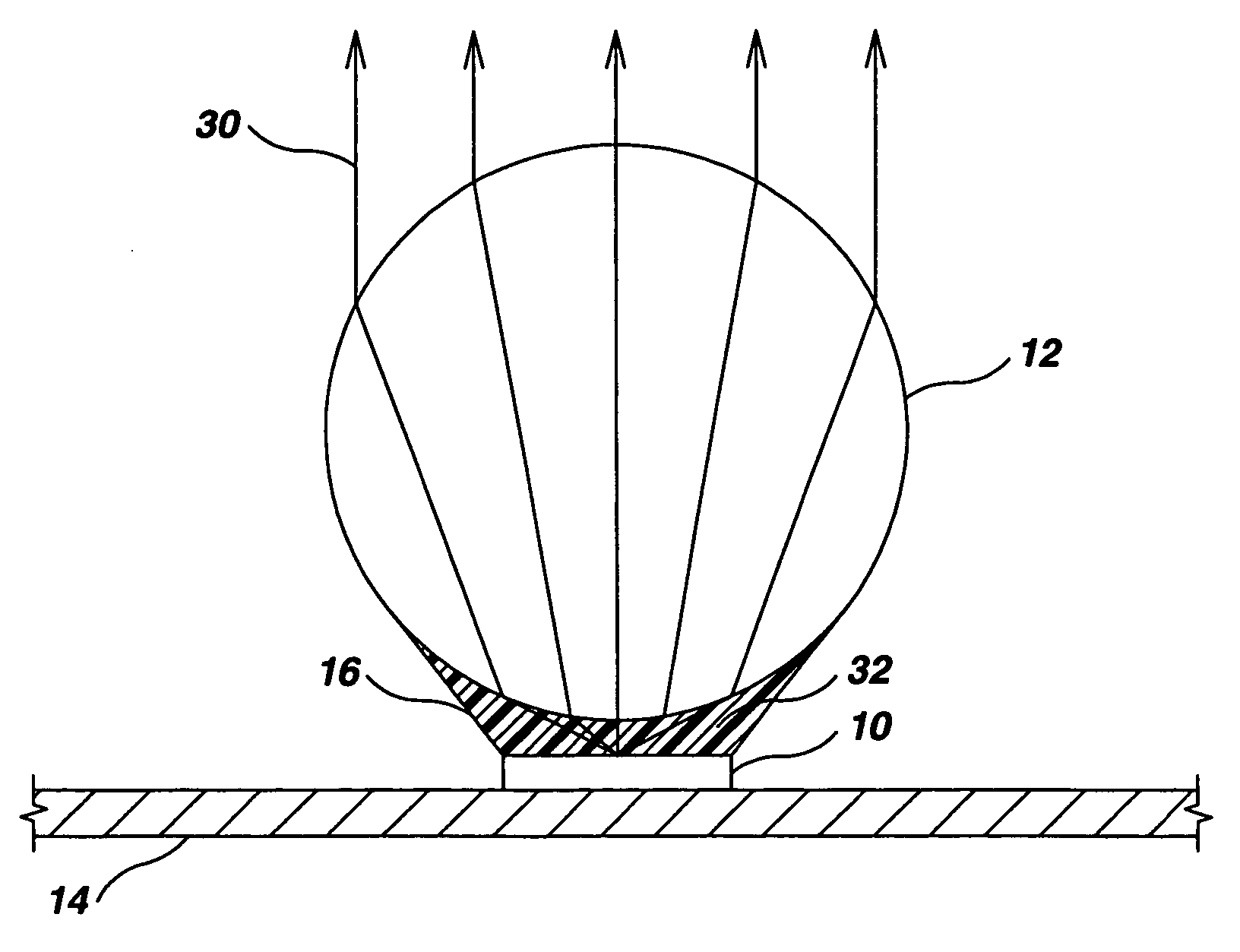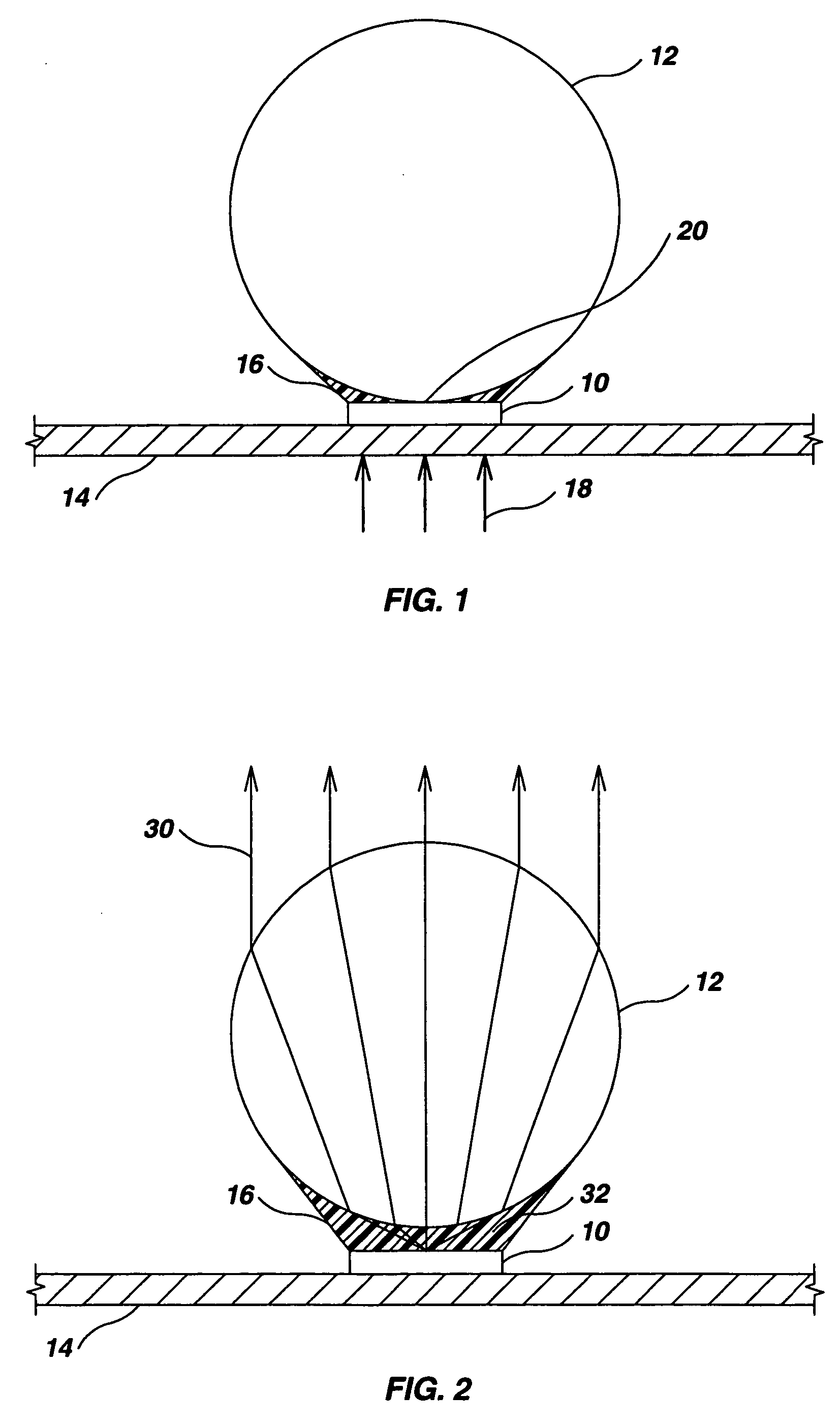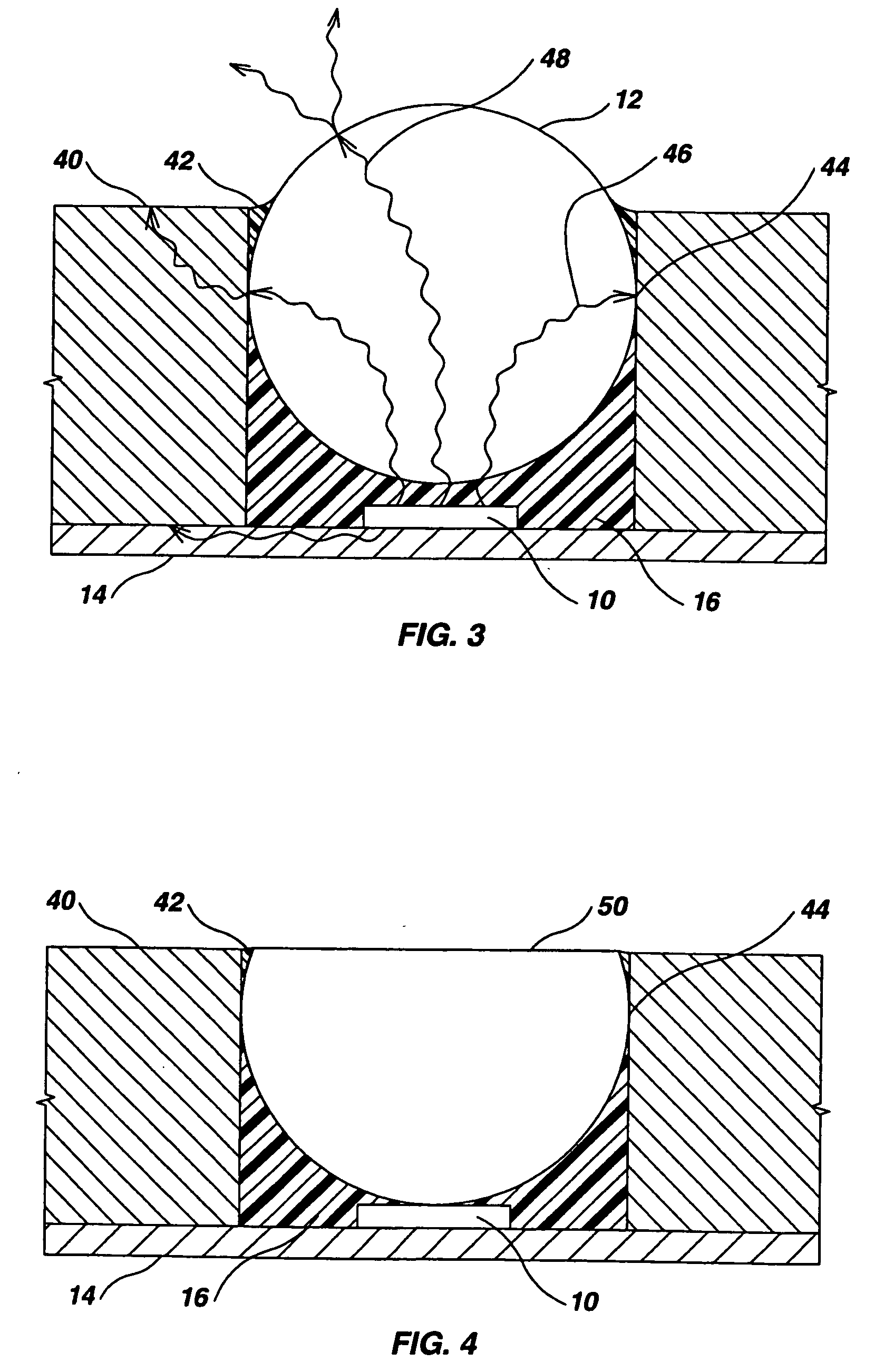LED illumination devices
a technology of led illumination and led light, which is applied in the field of lighting, can solve the problems of inefficient light distribution and the inability to produce about six to seven lumens
- Summary
- Abstract
- Description
- Claims
- Application Information
AI Technical Summary
Problems solved by technology
Method used
Image
Examples
embodiment 230
[0085] Referring to FIG. 28, another embodiment of an LED illumination device 230 is specially adapted for immersion in a body 232 of fresh water or salt water. The spherical lens element 208 is mounted in an hemispherical socket of an acrylic window 234. The window 234 preferably has an index of refraction greater than about 1.20. An intervening optically transparent material such as silicon gel 236 joins the upper surface of the spherical lens element 208 to the walls of the hemispherical socket in the window 234. Instead of water or seawater 232, the fluid in which the embodiment 230 is immersed could comprise other optically transparent liquids such as mineral oil, FluorinertTm fluid manufactured by 3M, or Novec™ fluid manufactured by 3M. The refraction of light from the LED 204 by the various optical elements and media is illustrated diagrammatically in FIG. 28 by a pair of light rays.
[0086] Referring to FIG. 29, another embodiment of an LED illumination device 238 has a spheri...
embodiment 248
[0088] Referring to FIG. 31, another embodiment of an LED illumination device 248 is designed to provide nearly hidden flush mount light sources. The spherical lens element 208 preferably has, again, an index of refraction of greater than about 1.80 to converge the light to a focus. A hemispherical second optical element 250 fits on top of the spherical optical element 208. Planar member 252 is placed above the hemispherical optical element 250 leaving an air gap having an index of refraction of about 1.00. Light emitted by LED 204 is collected by the spherical lens element 208 and focused by the optical element 250 through a pin hole aperture 254 in the planar member 252. The embodiment 248 is particularly suited for ceiling lighting, security lighting, illuminating wall art, etc. Element 250 serves to prevent total internal reflect (TIR) of the light exiting element 208. TIR light trapping inside the spherical lens element 208 can reduce the light transfer efficiency of the LED li...
embodiment 226
[0090]FIGS. 33-37 illustrate a thru-hull light assembly 262 utilizing various concepts previously described. A plurality of LED assemblies 264 (FIG. 37) are mounted behind a transparent window 266 (FIGS. 33 and 36). Each of the LED assemblies 264 is constructed in accordance with embodiment 226 of FIGS. 26 and 27. The LED assemblies 264 are mounted within a generally cylindrical housing 228 (FIGS. 35 and 36). The window 266 is sealed to the housing 228 via O-ring 270. Housing 228 and window 266 are mounted inside and held by flange ring 268. Housing 228 is in turn supported on threaded shaft 278 for external mounting on the hull 273 of the vessel. A central drum of the housing 228, as well as threaded shaft 278, passes through a small hole in the hull of the vessel. A nut 276 can be tightened on a threaded shaft 278 to press washers 280, 282, 284 and 286 against the inside surface of the vessel hull. The threaded shaft 278 is forced through the small hole in the vessel hull to press...
PUM
 Login to View More
Login to View More Abstract
Description
Claims
Application Information
 Login to View More
Login to View More - R&D
- Intellectual Property
- Life Sciences
- Materials
- Tech Scout
- Unparalleled Data Quality
- Higher Quality Content
- 60% Fewer Hallucinations
Browse by: Latest US Patents, China's latest patents, Technical Efficacy Thesaurus, Application Domain, Technology Topic, Popular Technical Reports.
© 2025 PatSnap. All rights reserved.Legal|Privacy policy|Modern Slavery Act Transparency Statement|Sitemap|About US| Contact US: help@patsnap.com



